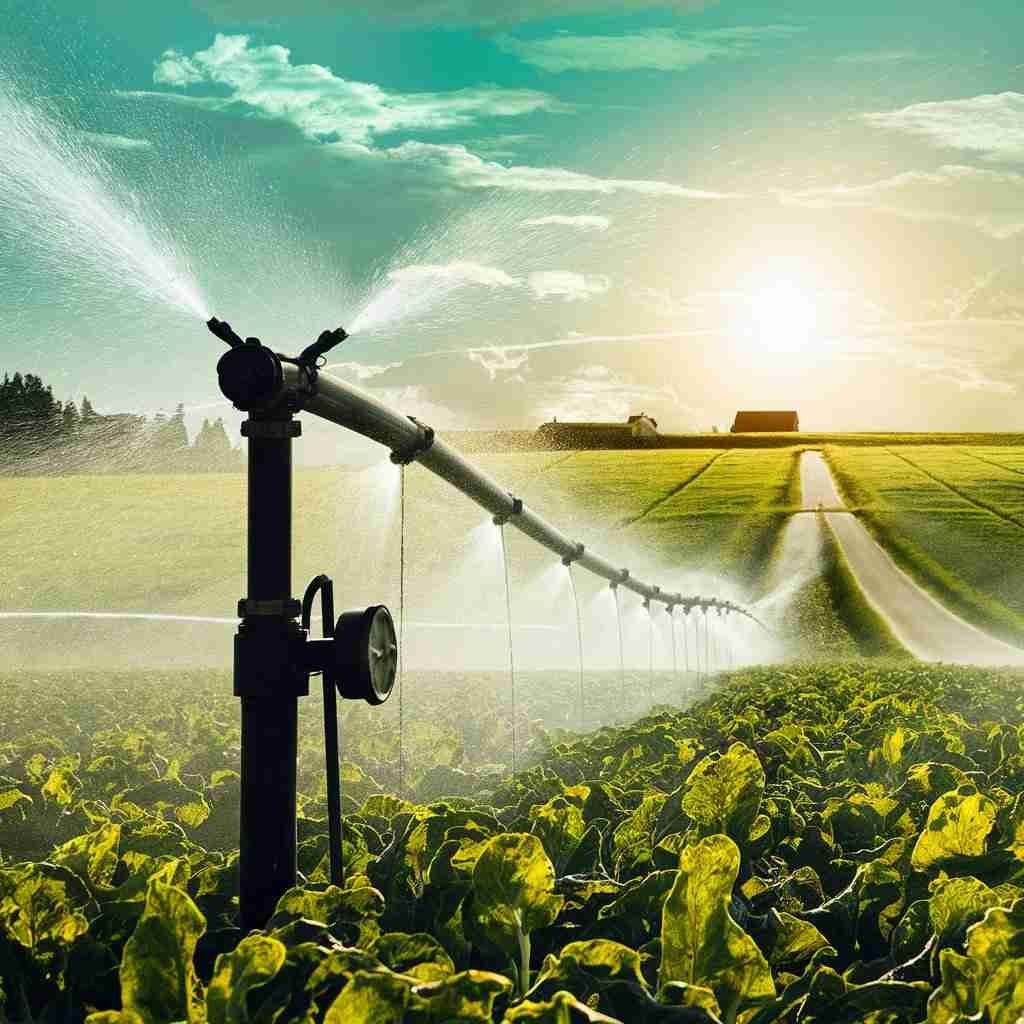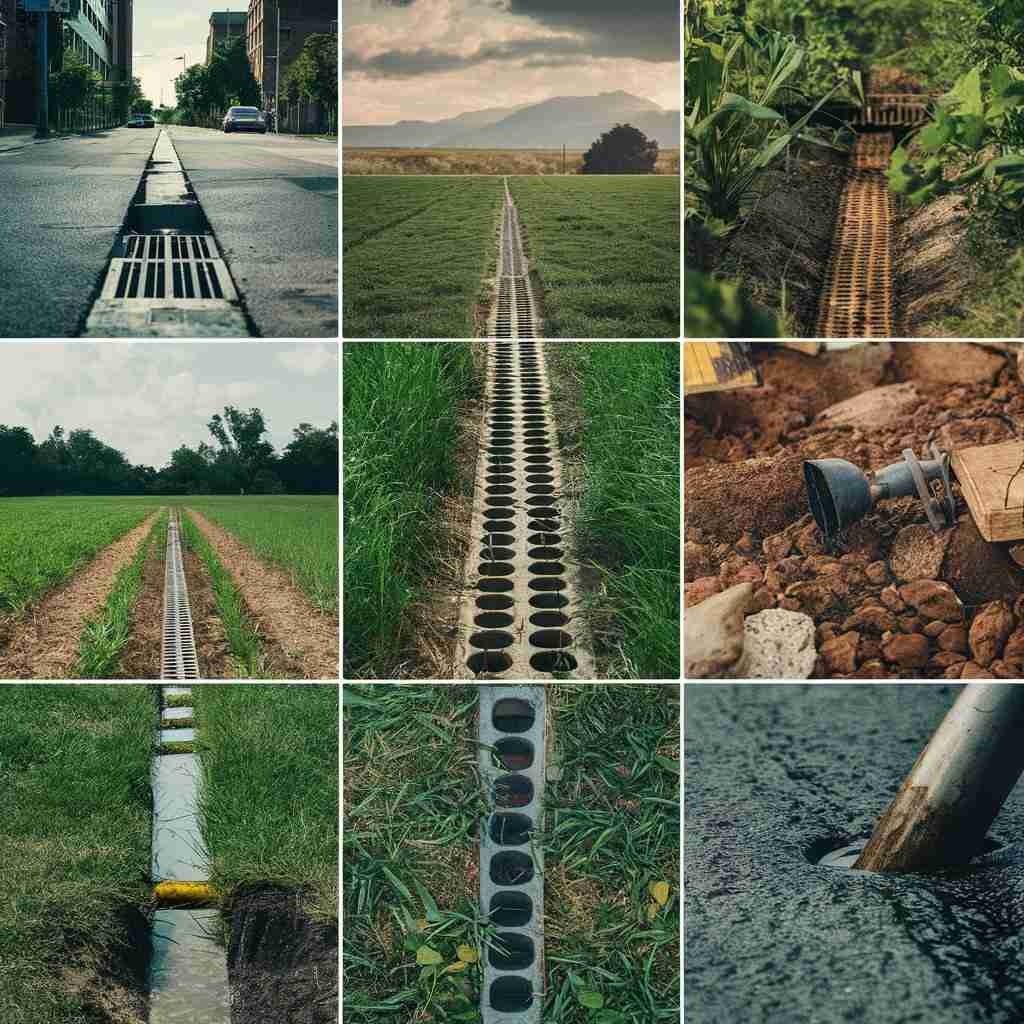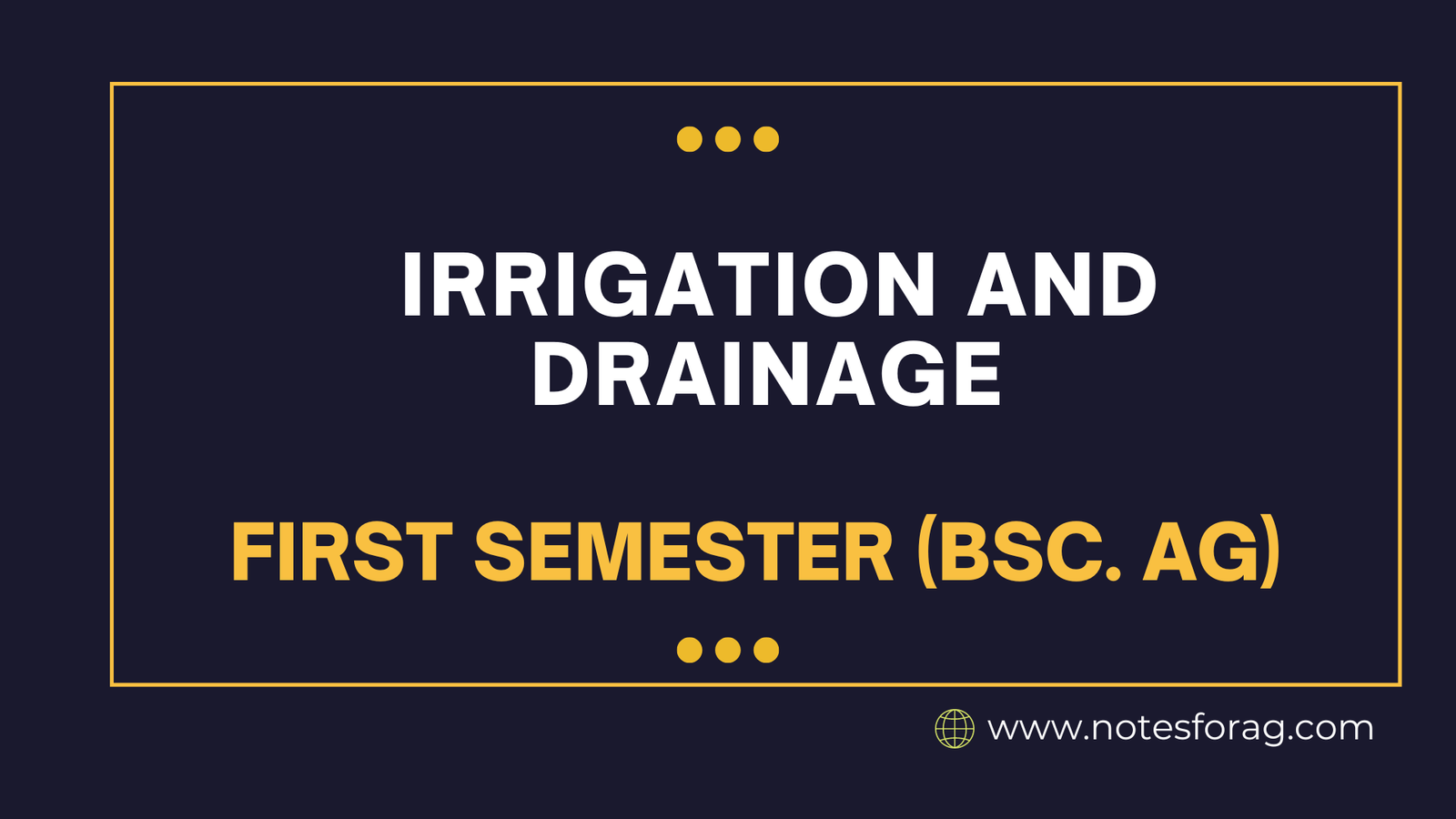Two crucial agricultural techniques that guarantee the best possible crop growth and productivity are irrigation and drainage. Irrigation and drainage are essential agricultural practices. Irrigation involves artificially adding water to the soil to make up for inadequate rainfall, providing the moisture needed for plant growth, nutrient transport, and temperature control. Conversely, drainage entails removing extra water from the soil to avoid waterlogging, which can harm crops and lower yields. By reducing the effects of erratic weather, these techniques balance soil moisture levels, encourage healthy crop development, improve soil structure, and support sustainable farming.
Table of Contents
Role of Water in Agriculture
Water is essential for plant growth and development. It serves multiple critical functions:
- Photosynthesis: In order for plants to convert light energy into chemical energy, photosynthesis requires water.
- Nutrient Transport: Water carries nutrients to various sections of the plant by dissolving them in the soil.
- Cell Structure: Water keeps cells turgid, which is necessary for plants to have structural integrity.
- Temperature Regulation: Through transpiration, water assists in controlling the temperature of plants.
- Germination: Seed germination and the early growth of seedlings depend on water.
Water Requirement of Crops
Crop type, growth stage, climate, and soil type are some of the variables that affect how much water crops need. It’s defined as the total amount of water required for evapotranspiration (ET), which comprises plant transpiration and soil evaporation, during the crop’s growing season.
Definition of Irrigation
The artificial application of water to the soil to promote crop growth is known as irrigation. It makes up for insufficient rainfall and guarantees crops get the water they require for healthy growth.

Objectives of Irrigation
- Ensuring Adequate Moisture: To promote healthy growth and maximize yield, crops must receive an adequate amount of moisture.
- Improving Crop Quality: Ensuring a steady supply of water will improve the quality of the produce.
- Supporting Several Crops: Enabling the growth of several crops in areas with inadequate rainfall.
- Soil Fertility: Keeping and enhancing soil fertility through nutrient dissolution and root-transportation.
- Controlling Soil Temperature: Managing soil temperature, particularly in arid areas where crop growth may be impacted by temperature extremes.
Methods of Irrigation
1. Surface Irrigation
A traditional method of surface irrigation involves distributing water over the soil’s surface and letting gravity carry it across the land. It includes methods like basin, furrow, and flood irrigation. Water evaporation and runoff cause inefficiencies in surface irrigation systems, despite their ease of setup and low cost. Moreover, waterlogging and soil erosion are possible, especially on land that slopes or has poor drainage.
2. Sprinkler Irrigation

Water is sprayed over the crops using a sprinkler and pipe system in sprinkler irrigation. This approach uses a number of different strategies, including fixed sprinklers, lateral movement, and center pivot. Sprinkler systems have benefits like uniform water distribution and terrain suitability. Nevertheless, they have disadvantages like high initial costs, high energy consumption, and the possibility of water loss from evaporation and wind drift.
3. Drip Irrigation
A system of tubes and emitters allows drip irrigation to provide water directly to the plant’s root zone. Using less water and less evaporation and weed growth, this method is very effective. In particular, row crops and orchards are excellent candidates for drip irrigation. But to guarantee peak performance and avoid emitter clogging, it needs a substantial upfront investment and cautious upkeep.
4. Subsurface Irrigation
Water is applied to the root zone of the soil directly below the surface through subsurface irrigation. Seepage irrigation and subsurface drip irrigation are examples of this type of technique. Along with reducing weed growth and surface runoff, subsurface irrigation offers efficient water use. That is not without its difficulties, though, including expensive installation fees and trouble keeping an eye on and maintaining the system’s functionality.
5. Manual Irrigation
Applying water to crops by hand with buckets, hoses, or watering cans is known as manual irrigation. Although manual irrigation is simple and inexpensive, which makes it ideal for backyard gardens or small-scale farming, it requires a lot of work and time. Large agricultural areas are better served by automated or mechanized irrigation systems due to their higher efficiency and scalability. This makes it inefficient in these situations.
Scheduling of irrigation
The process of irrigation scheduling entails figuring out when and how much water to give crops in order to meet their requirements and reduce water waste. The type of soil, crop stage, weather, and water availability are some of the variables that affect when to water crops. Below is a brief overview of the procedure:
Soil Moisture Depletion Approach
The Soil Moisture Depletion Approach is a scheduling technique for irrigation that is predicated on tracking the soil’s moisture content.
Process:
- Monitoring: Weigh the soil moisture on a regular basis.
- Threshold Determination: Establish the permitted level of depletion.
- Watering Timing: Watering should start as soon as the soil reaches a certain point.
IW/CPE Approach (Irrigation Water/Crop Penetration Depth Approach)
The IW/CPE Approach is an irrigation scheduling strategy that prioritizes preserving sufficient soil moisture throughout the crop’s root zone.
Process:
- Stage Identification: Determine which stages of growth are crucial.
- Water Requirement Estimation: Establish how much water is needed at each step.
- Scheduling: During crucial phases, water to satisfy demand.
Evaporimeter
A device called an evaporimeter, sometimes referred to as an evaporation pan or an evapotranspiration (ET) gauge, is used to gauge the rate at which soil evaporates.
Process:
- Installation: Set up in a clear space.
- Monitoring: Check the water level frequently.
- Calculation: Using the rate of water loss over time, find the evaporation rate.
Drainage

To maintain ideal moisture levels for plant growth, avoid waterlogging, and lessen the negative impacts of excess water on crops, soil, and ecosystems, the process of draining excess water from the soil or land surface is known as drainage. It includes applying a number of strategies to manage surface water runoff, regulate groundwater levels, and enhance soil fertility and structure, including surface ditches, subsurface drains, and land grading.
Adverse Effects of Waterlogging
- Reduced Oxygen Levels: Waterlogging limits the amount of oxygen that is available in the soil, which causes plant roots to become oxygen-deficient.
- Root Damage: Root rot and reduced root function can result from suffocation caused by prolonged waterlogging.
- Nutrient Imbalance: Plant availability and uptake of nutrients might be hampered by waterlogging.
- Soil Structure Degradation: Over waterlogging can cause soil erosion and compaction, which over time lowers soil fertility and productivity.
- Reduced Microbial Activity: Waterlogging modifies the microbial populations in soil and lowers their activity.
Types of Drainage
1. Surface Drainage:
Using surface drainage techniques, water discharge on the soil’s surface is controlled to avoid waterlogging and pooling. To divert surplus water off of fields, this can involve building open ditches, channels, or grass-filled streams. While grassed streams use vegetation to minimize erosion and manage runoff, open ditches give water a visible path.
2. Subsurface Drainage:
The purpose of subsurface drainage systems is to construct pipes or tiles below ground to remove surplus water from the root zone. One popular subsurface drainage technique is tile drainage, which involves laying perforated pipes or tiles below the soil’s surface to collect and move water to drainage outlets. This aids in preventing waterlogging, raising soil aeration, and lowering the water table.
3. Vertical Drainage:
Using vertical drainage techniques, more water is drawn out of groundwater or deeper soil layers. Pump-equipped deep wells can be used to draw groundwater from deep aquifers and lower the water table. Another technique is to create vertical sand drains, which are essentially soil-filled columns that hold gravel or sand to improve drainage and reduce waterlogging in poorly draining soils.
4. Contour Drainage:
The primary goal of contour drainage techniques is to control water flow over sloping terrain in order to lessen erosion and avoid waterlogging. In terrain that slopes or is hilly, contour trenches and contour bunds are frequently employed methods. A soil embankment built across a hill to slow down water flow and encourage infiltration is called a contour bund. Contour trenches are dug along contour lines to intercept and divert surface runoff.
5. Subirrigation:
In order to increase irrigation efficiency and drainage, subirrigation techniques adjust the amount of water in the soil profile. In order to control water levels and avoid waterlogging during rainy seasons, controlled drainage systems make use of movable components in subsurface drains. Another subirrigation technique is called “controlled traffic farming,” in which farm equipment is used to improve overall soil drainage and health by reducing soil compaction and increasing water infiltration.
Conclusively, irrigation and drainage are essential elements of contemporary farming. Irrigation helps to maintain healthy plant growth, nutrient uptake, and temperature regulation by ensuring that crops receive enough moisture for optimal growth and development. Conversely, drainage is essential for eliminating surplus water from the soil, averting waterlogging, and lessening the negative impacts on crops and soil integrity. Both, irrigation and drainage methodologies facilitate the regulation of soil moisture content, promote robust crop growth, enhance soil architecture, and bolster ecological agricultural methodologies. Irrigation and drainage systems support environmental sustainability, resilience, and higher agricultural productivity by effectively managing water resources and reducing the effects of unpredictable weather.
Frequently Asked Question(FAQ)
Why is irrigation important in agriculture?
In agriculture, irrigation is essential because it guarantees that crops receive enough water, particularly in dry spells when rainfall is insufficient. It supports agricultural productivity, enhances yield and quality, and maximizes crop growth.
What are some environmental benefits of proper irrigation and drainage practices?
Appropriate irrigation and drainage techniques can decrease soil erosion and nutrient runoff, lower the danger of water contamination, maintain the health of ecosystems, and support sustainable land management.
Related Articles

